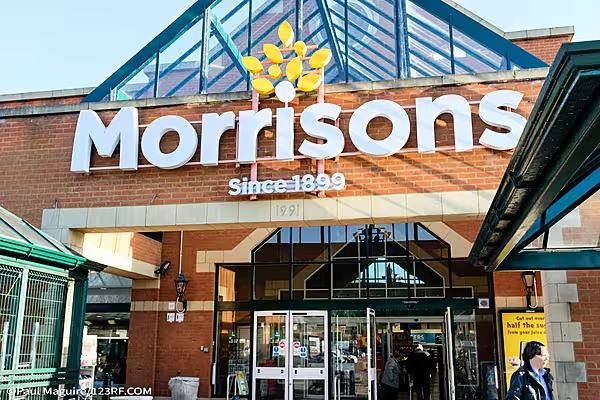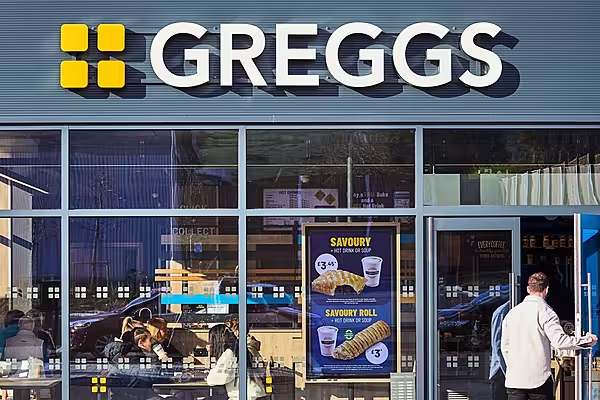Discount retailer B&M European Value Retail has reported a 10.1% increase in revenue in its 2023/24 financial year, with its core UK businesses reporting sales of £4.4 billion (€5.15 billion) – an 8.5% increase.
Commenting on its performance, Alex Russo, chief executive, said that the business “performed well in the year, delivering strong operational execution.”
Here’s how industry analysts from GlobalData, AJ Bell, Shore Capital, Liberum and Stifel viewed its performance.
Sophie Mitchell, GlobalData
“B&M has delivered double-digit group revenue growth for its FY2023/24, with a longer 53-week trading period, inclusive of the early Easter weekend, aiding its slower H2 performance. However, it cannot be understated that, regardless of this difference in reporting period, B&M’s full-year performance was impressive, delivering 10.1% group revenue growth against a 6.6% comparative.
“Crucially, B&M has managed to deliver this growth profitably, with FY24 group adjusted EBITDA expected to be £629m, at the top end of its £620m-£630m guidance and a 9.8% increase on FY2022/23, indicating an exemplary execution of strategy to deliver value for money for consumers whilst not compromising on cash generation.
“B&M’s UK like-for-like [L-F-L] performance in its final quarter, with growth of 2.9%, puts it ahead of competitor Poundland’s performance, who reported UK L-F-L sales down 2.8% for a similar period, indicating that B&M’s success is not just coming from new-store openings, but also from demand for its extensive offer of value products. B&M has opened 47 gross new stores in the UK – two ahead of its previous guidance – including the ex-Wilko stores the group acquired, which are performing ahead of expectations.
“This combination of demand for B&M’s products and new-store locations, bringing its offer to more consumers across the UK, has driven sales for B&M. The group remains on track to open no [fewer] than 45 UK B&M stores in each of the next two financial years, which will likely continue to provide sustainable growth for the group, as L-F-L performance indicates that its stores remain successful after their ‘honeymoon’ period.”
Danni Hewson, AJ Bell
“The demise of Wilko should have benefitted B&M over the past six months, as a key competitor was removed from the market. The jury is still out, as recent performance has been disappointing.
“On one hand, guidance for adjusted earnings to come in at the top end of previous guidance is vindication that B&M’s strategy plays well to an uncertain economic backdrop. Its products are affordable, and when consumers are watching every penny, value propositions shine through and through.
“However, B&M’s performance is not quite as solid as you might think. It’s clear that an earlier-than-normal Easter has pulled forward some sales, which might have normally occurred in early April, outside of the trading period being reported. Had it been a ‘normal’ Easter date, it seems as if B&M’s trading update might not have been so bullish.
"Even with the Easter boost, fourth-quarter UK like-for-like sales growth of 2.9% looks pedestrian. It implies that the company is finding it harder to keep churning out the success that has made it one of the big retail winners over the past decade.
“While the company continues to find ways to expand its store estate and plant flags in more territories, the competition is heating up, with many other retailers and grocers offering more value-priced products with great success.”
Clive Black, Shore Capital
“B&M has ground out FY24 in its core chain in the UK. In an inflationary market, its FMCG sales are well behind the pack, so losing market share, we believe – that is, we do not contend that B&M is gaining volume share. Such a fact suggests a rational firm is carefully managing gross margin, costs and cash, whilst complaining about dynamics in the FMCG scene.
“Overall exit trade for FY24 is modest to us, which raises questions about competitiveness in FMCG, the scope to absorb higher operating expenses, and, ultimately, whether the estate, which has clearly been through its most potent period, is now […] more mature, and so [in the] cash-compounding phase. For discount chains, such a position is not easy to admit, but it may mean deteriorating ongoing returns, either on new space or in the core.”
Adam Tomlinson, Liberum
“This is a very strong out-turn, which contrasts very positively to much of the reporting we are seeing across the rest of the sector. The predictability of B&M’s model is driven by market share gains from a ‘cookie-cutter’ store roll-out – this is not an LFL story – and its disruptive, value-focused offer.
“Today’s update ticks all the right boxes, giving us confidence in the runway for long-term compounding growth – 20%+ ROIC enabled FY20-23 total dividends worth 30% of market cap, and we expect this profile to continue. With the shares down 17% since late 2023 to trade on a 12-month forward PER of 12.6x – for a three-year forecast PBT CAGR of 8% – now is a good opportunity to buy.”
David Hughes, Stifel
“B&M has finished the year well, with 4Q24 UK LFL growth of 2.9% – up from 1.1% in 3Q – bringing FY24 revenue to £5.5bn, up 10% YoY and 1.3% ahead of consensus. [...] Following 4Q LFL sales growth of 2.9%, B&M has delivered FY24 sales of £5.5bn, up by 10% YoY. Within this, the company saw positive growth across all its fascia, with B&M UK up 8.5%, B&M France up 19.2% and Heron Foods up 15.3%. With the 47 new-store openings trading well, we continue to see more headroom for store expansion to drive future growth.
“Despite operating cost inflation, B&M has broadly maintained profit margins, with pre-IFRS EBITDA expected to be £629m, also up by [approximately] 10% YoY and at the top of previous guidance – £620m-£630m. In addition, the strong cash generation of the business has seen leverage – pre-IFRS16 net debt/EBITDA – fall to 1.2x from 1.3x last year, even after the payment of [an approximate] £200m special dividend in February.”














